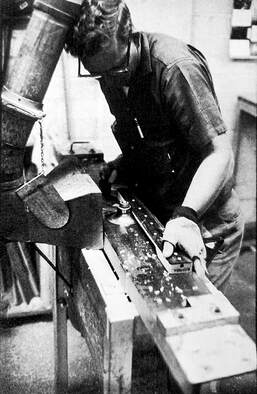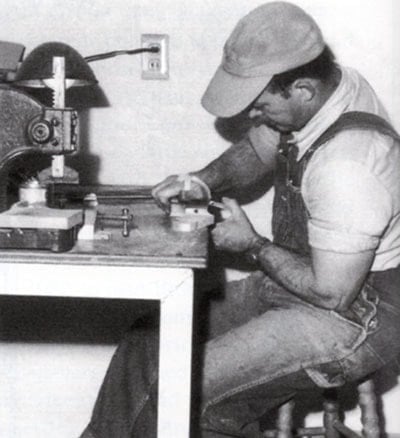Neck shape
|
Neck profiles of the Stratocasters changed a lot in the early years.
1954 and 1955 Stratocasters featured a huge “U” shaped neck, also called baseball bat, thick and large (e.g. .94" depth and 1.60" wide at the first fret). In the course of 1956 soft “V” shaped necks appeared, and gradually replaced the previous ones, but later in 1957 the profile became very prominent. These “V” shaped necks are often called boat neck. Early 1958 necks were flatter and rounded, though they still had a slight “V” feel. However, in late 1958 a much flatter profile was adopted with thickness steadily below .90" at the 1st fret. Rosewood-capped necks made after mid-59 were really flat and had a cross-section often below .80" depth! Early to mid-'60s necks retained similar dimensions, but after 1963 they often featured more shoulder and seemed to be a bit chunkier than 1959 to 1961 necks. They are universally considered among the best in Fender production, not excessively large and with a shape which is often defined oval “C”. |
By the late '60s, both chunkier and flatter profiles were produced, and variances in the neck profiles reached at their peak during the '70s, due to an increased production and machinery wear. As a rule, however, round clubby necks with a lot of shoulders are the standard on most '70s Stratocasters with measurements like .85" at the 1st fret and .95" at the 12th fret.
At the end of 1981, Fender bought the Austrian Zuckerman carving machine, which could shape eight identical necks at a time as per a master template, and helped Fender to standardize neck profiles. Stratocaster neck became more consistent, rather flat and with rounded edges. This “flat oval shape”, a sort of gentle “C” profile (e.g. .80" depth), became a standard appointment on '80s and '90s modern Fender guitars and was adopted for the 1987 American Standard Stratocaster.
FINGERBOARD RADIUS AND FRETWIRE
|
Fender employee used a swing-arm fret slot cutter for fretting necks and the frets were slid on the side and pulled into the slot, rather than hammered in from the top as most of the other companied did. Maple necks were sprayed after the frets were installed.
During the pre-CBS and CBS era, Fender used thin nickel silver fretwire (ca. 0.078” wide and 0.040” high), which remained a standard feature until the early '80s. By the early '80s, jumbo fretwire became the standard appointment, except on the Vintage Reissue Stratocasters which retained a more traditional thinner fretwire. All Stratocasters necks made between 1954 and mid-1983 were designed with a slightly convex 7,25” fretboard radius. The new 1983 Standard Stratocaster, known with the nickname "2-knob Stratocaster", and the Elite Stratocaster were the first Fender guitars with a 12” flat fretboard. |
A few years later the American Standard Stratocaster and the Plus Series come back to slightly rounded fretboard (9.5”).





